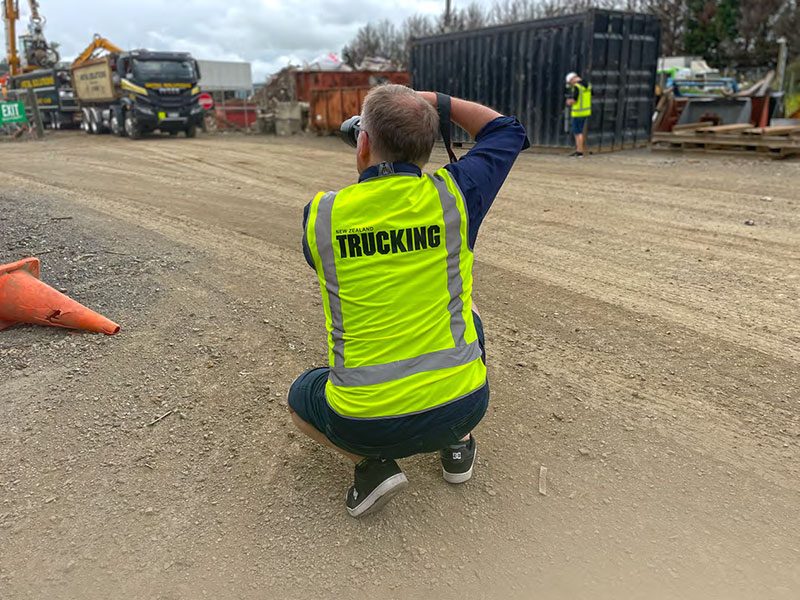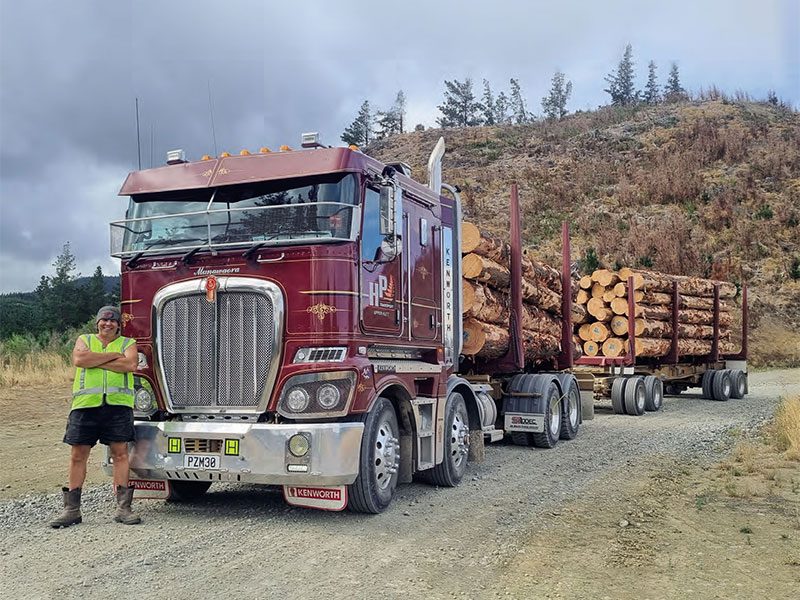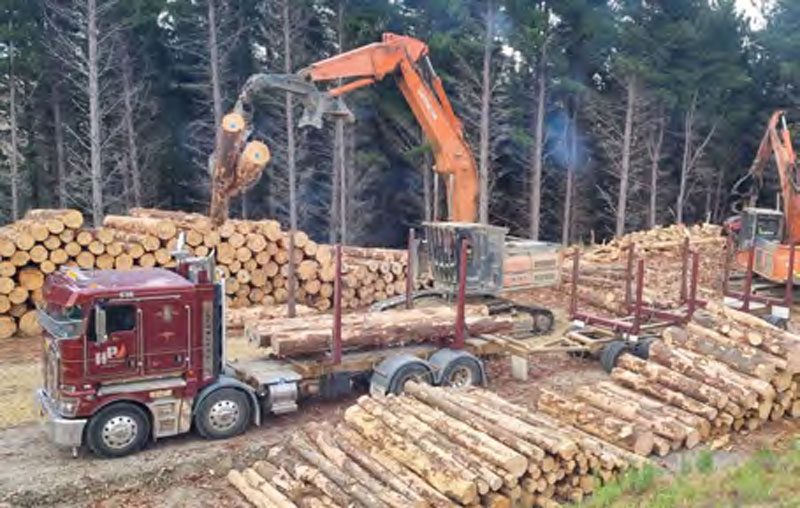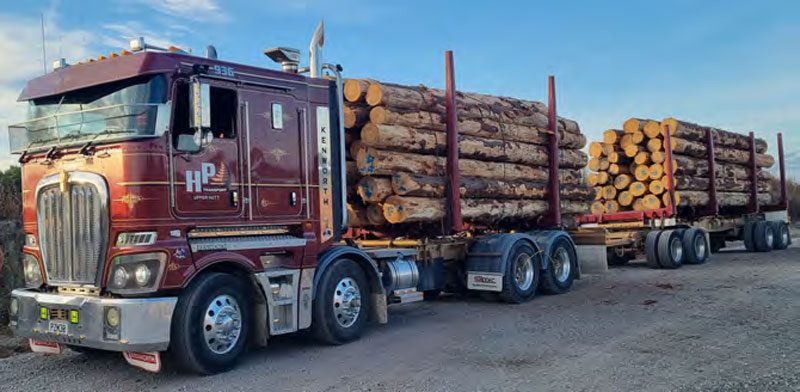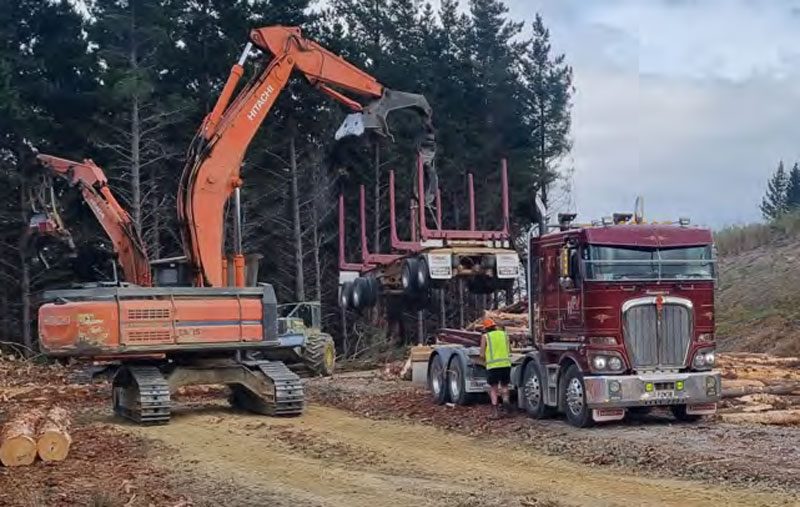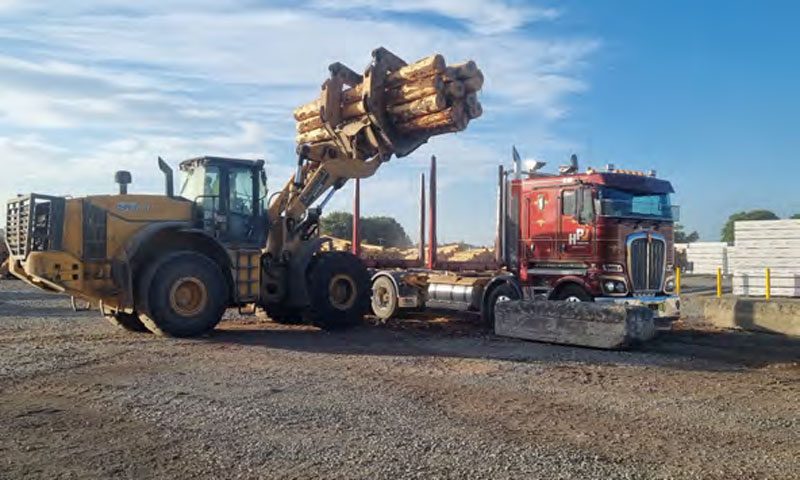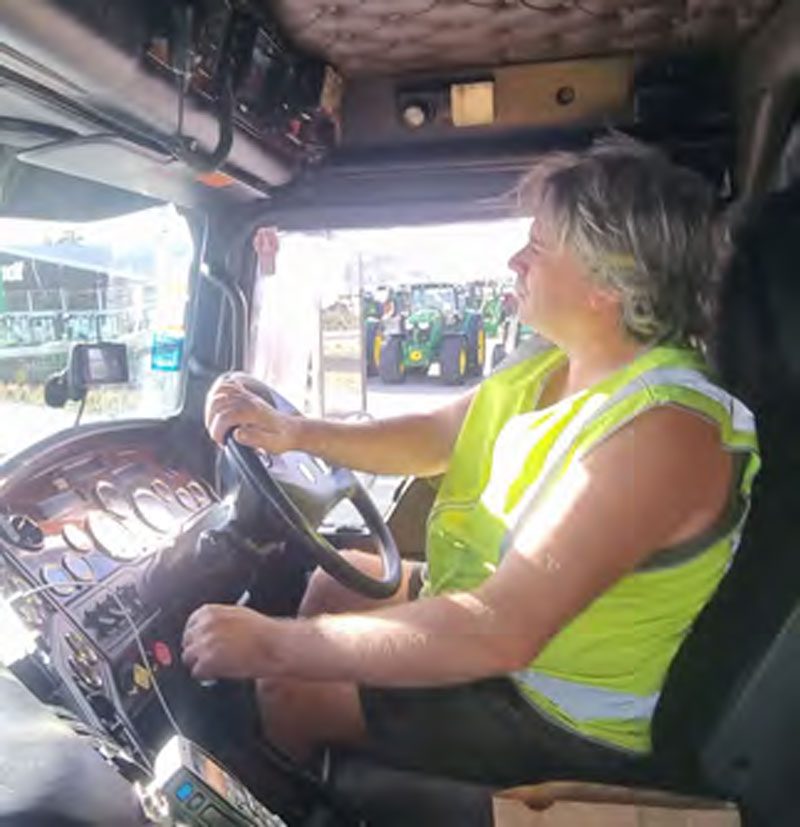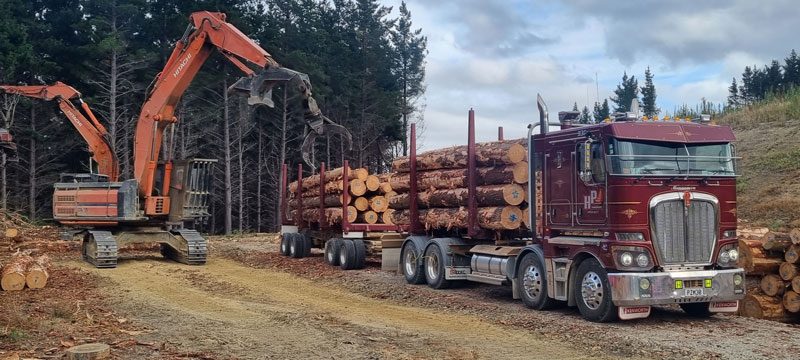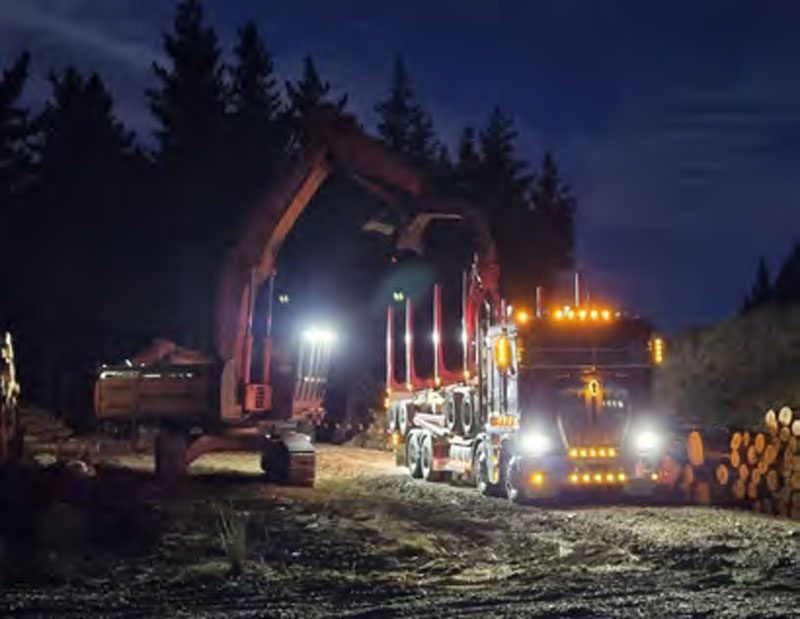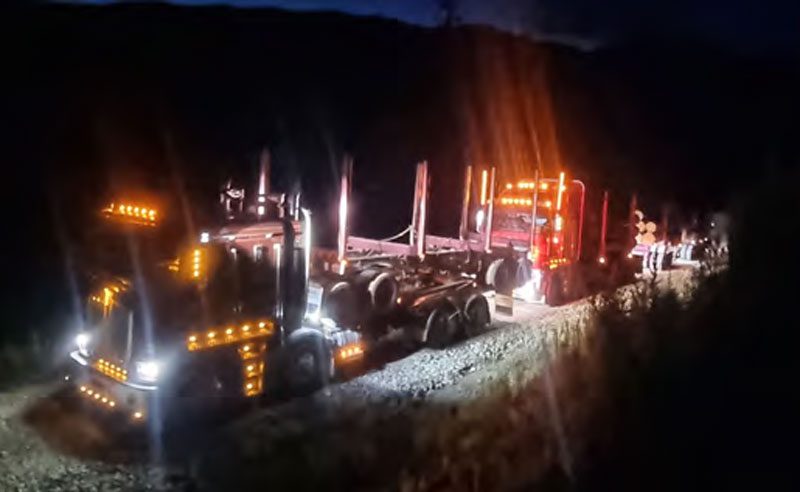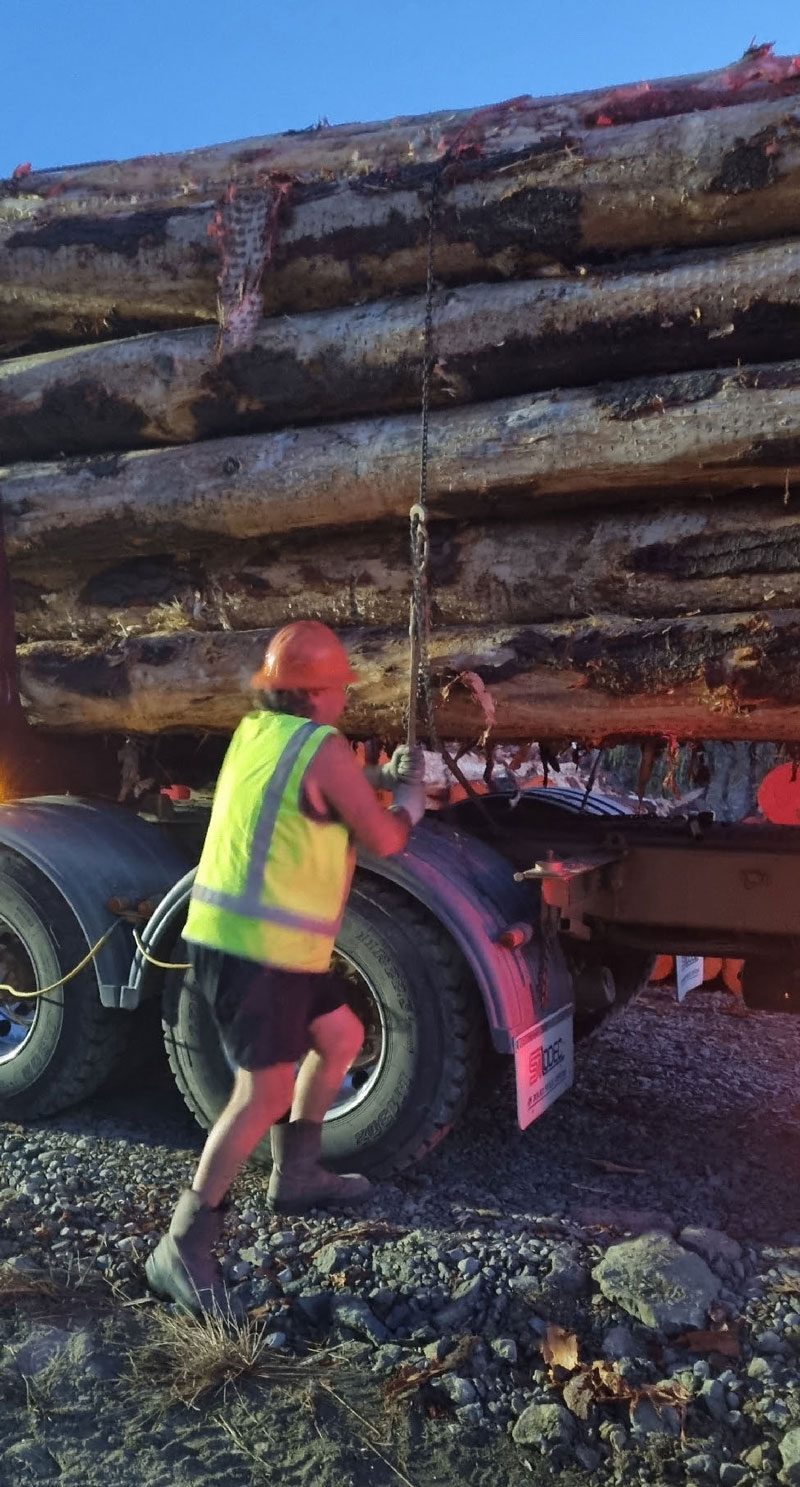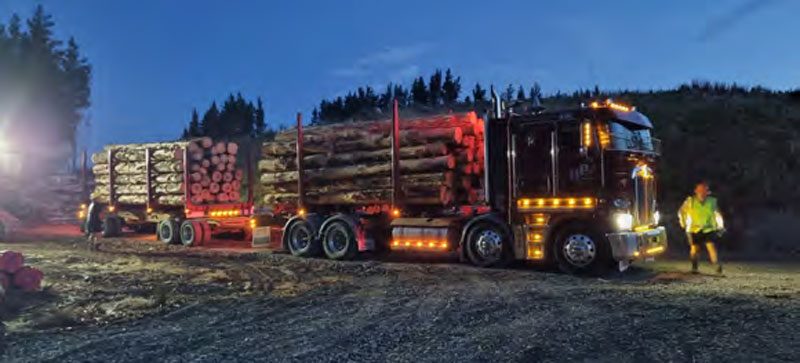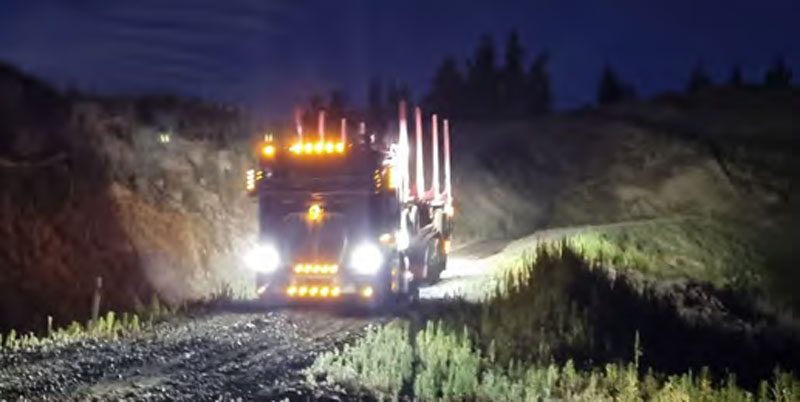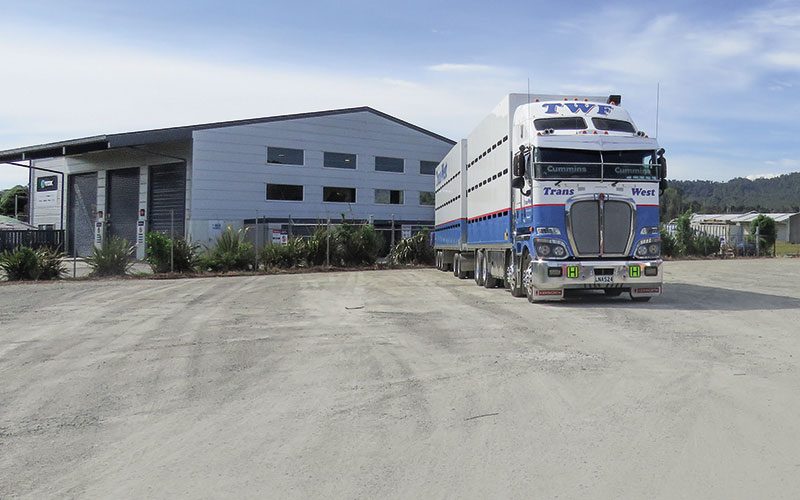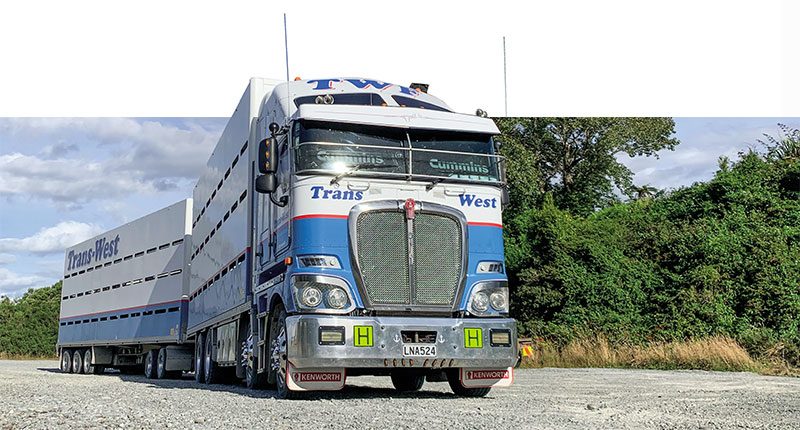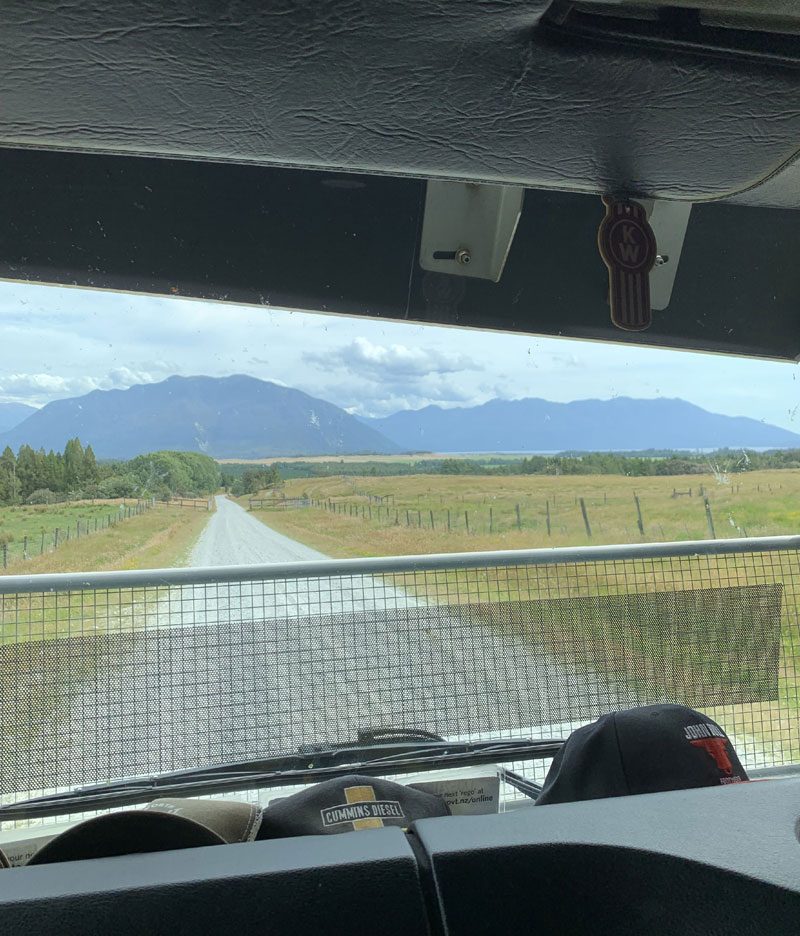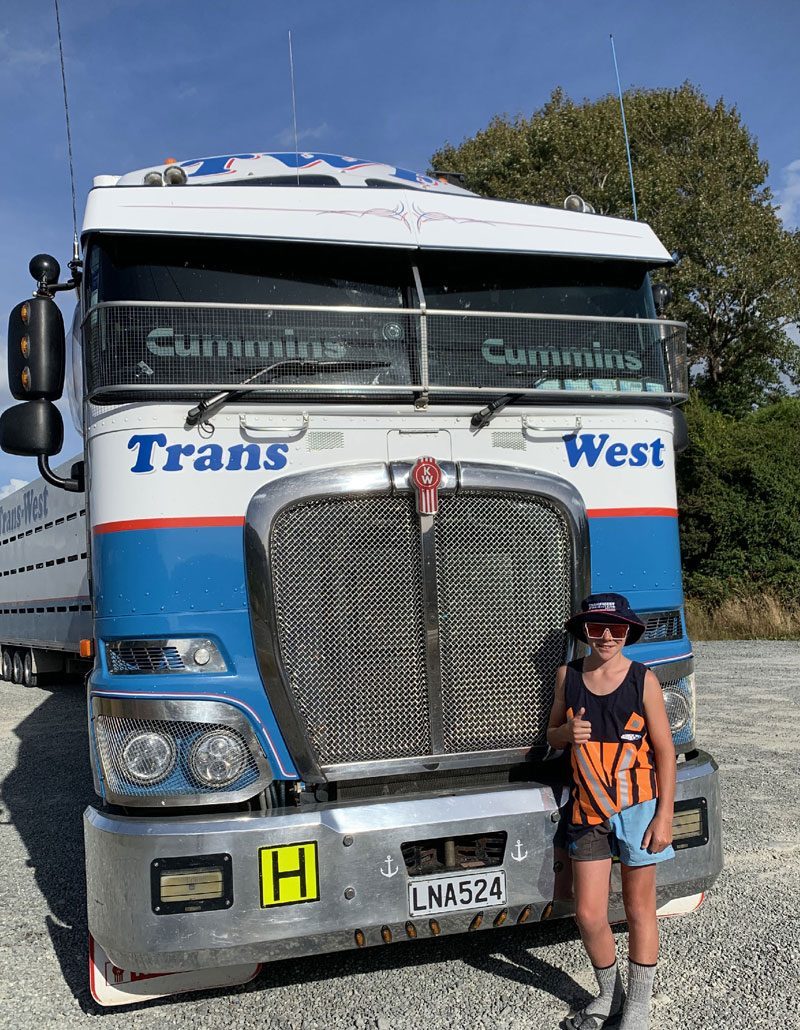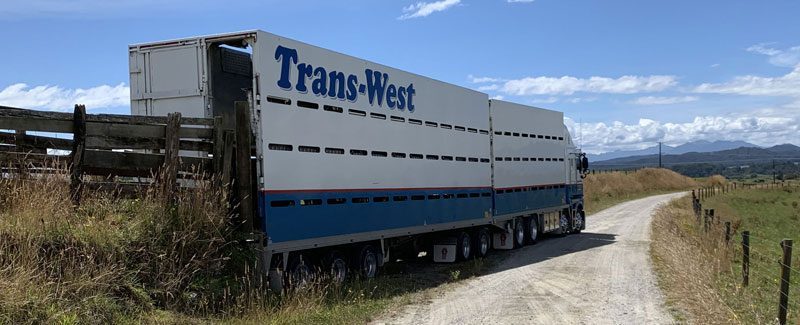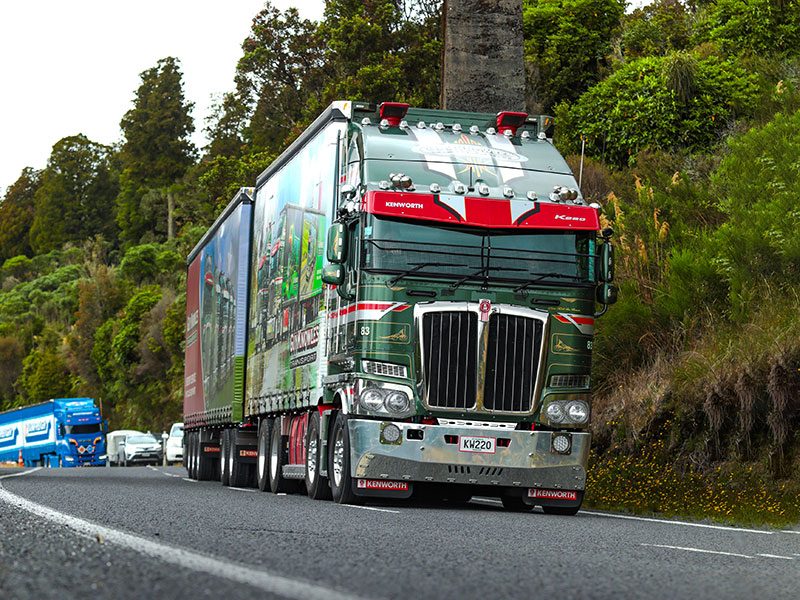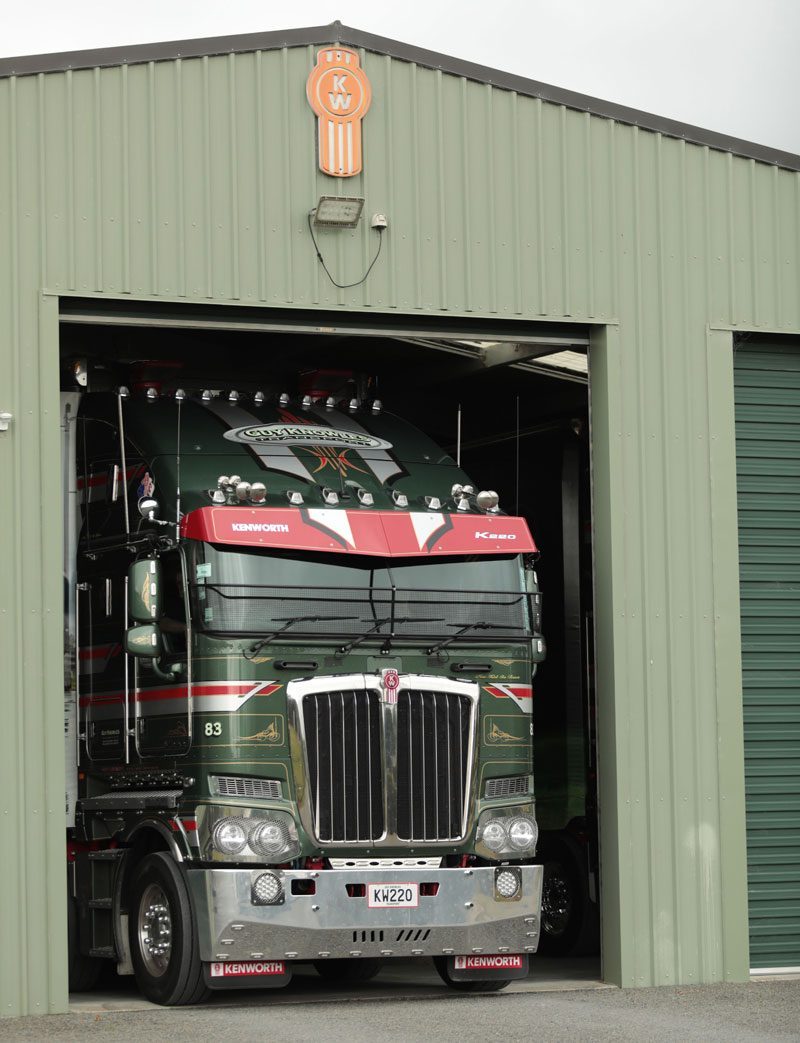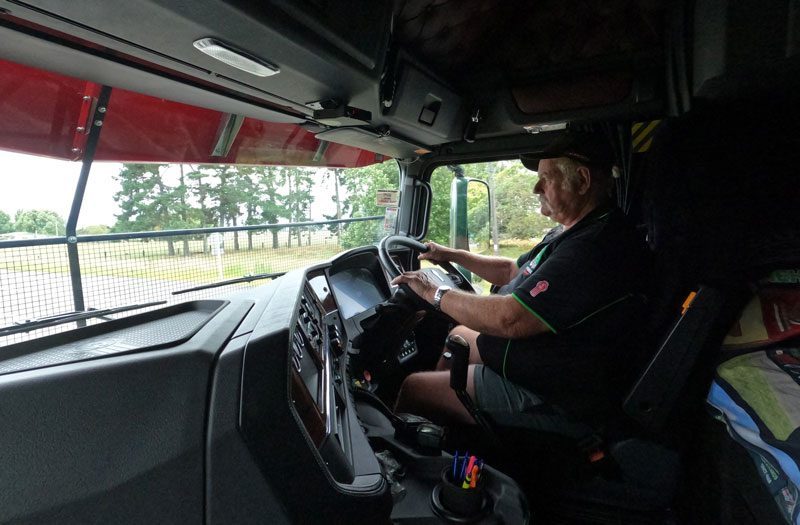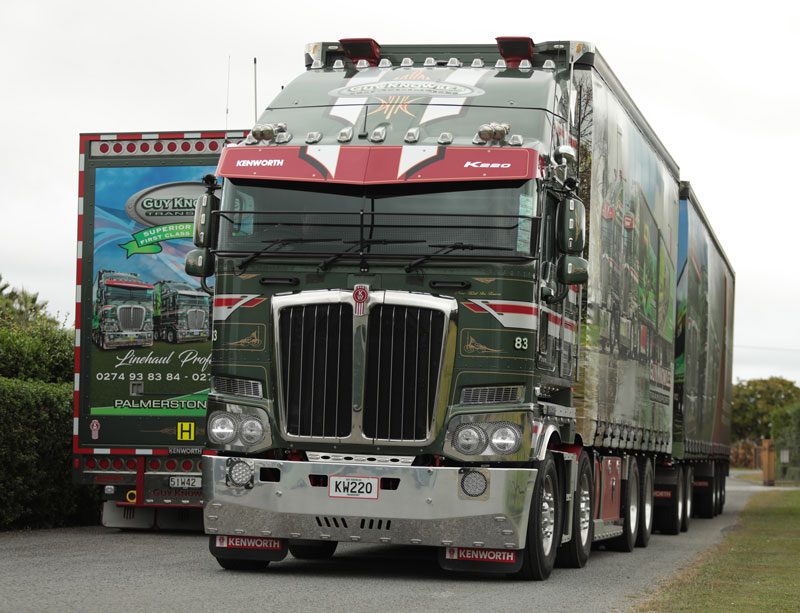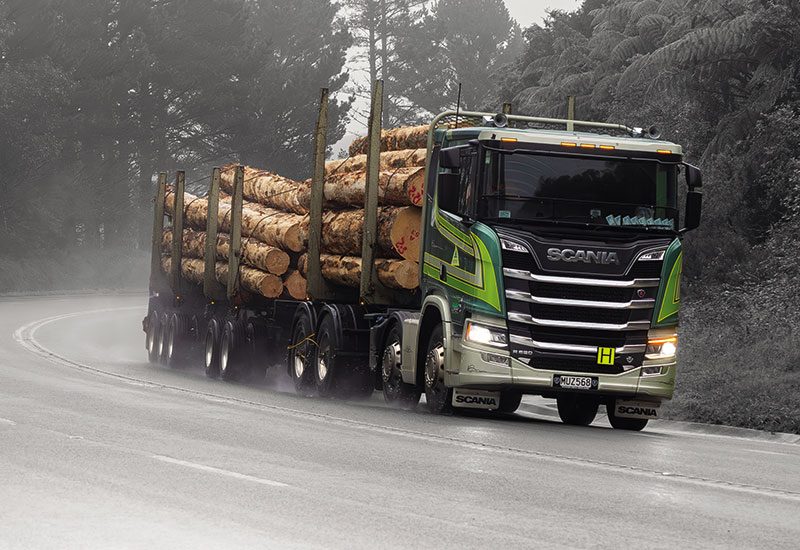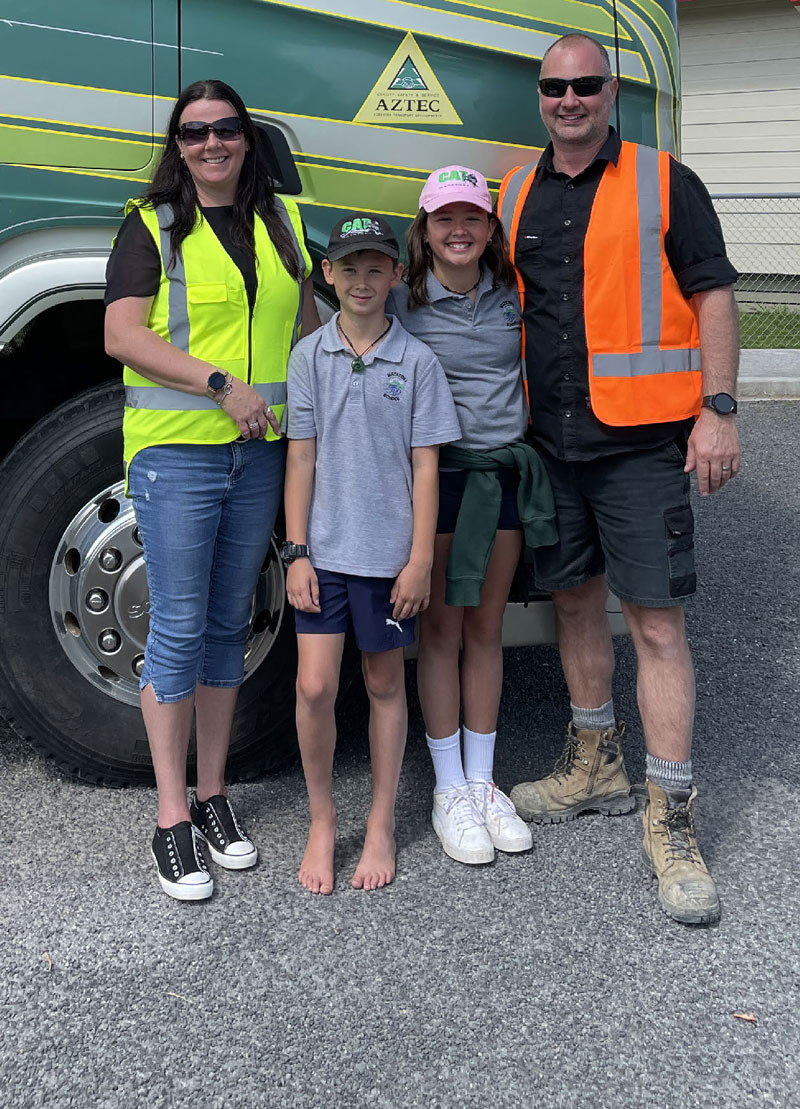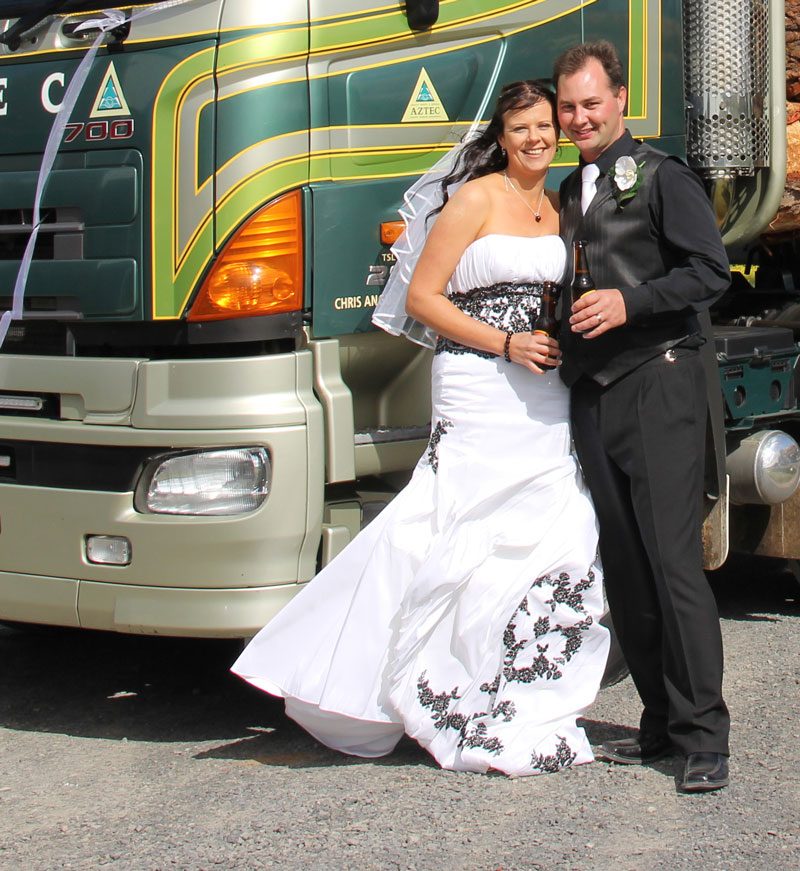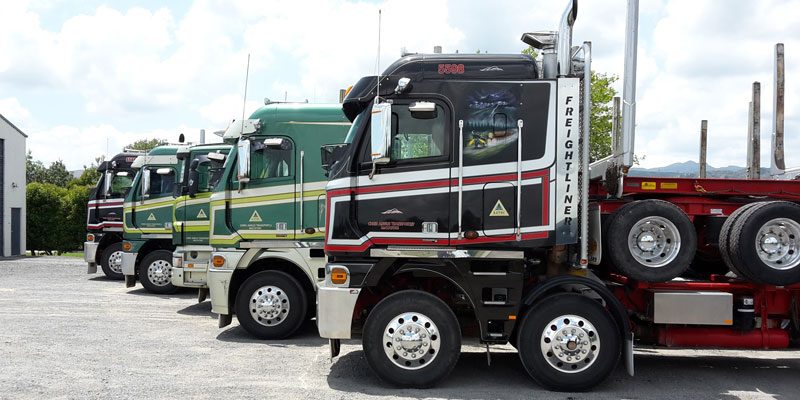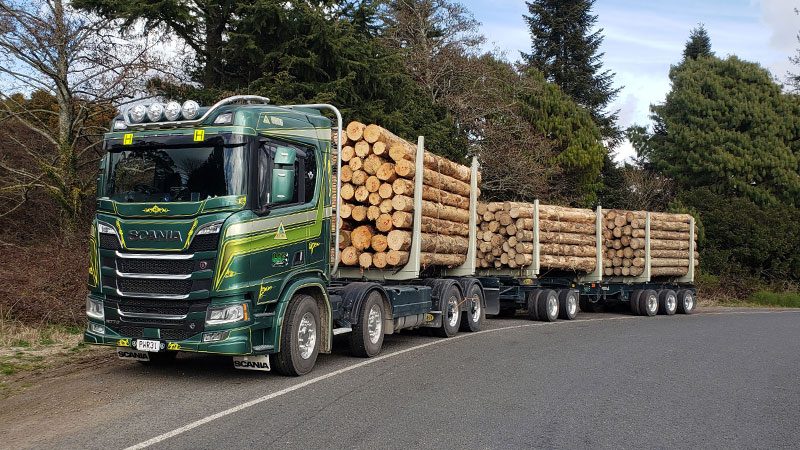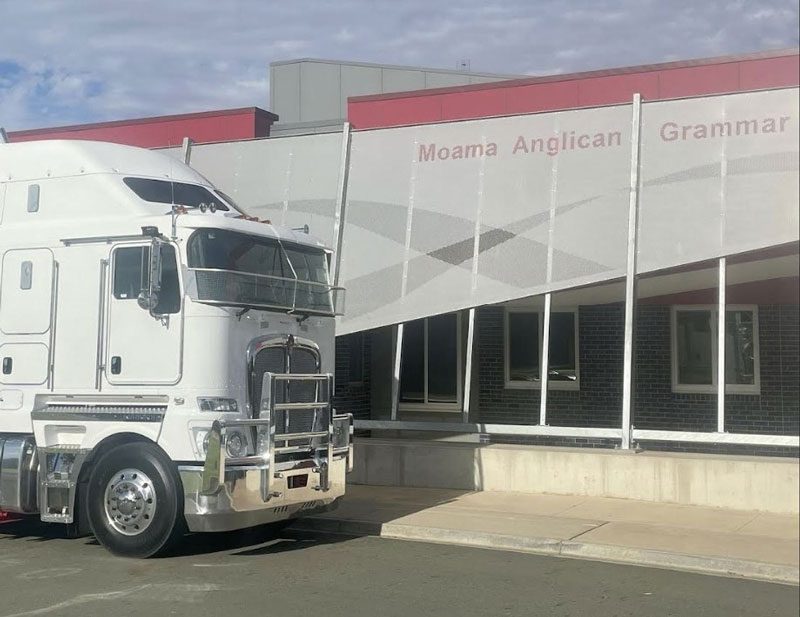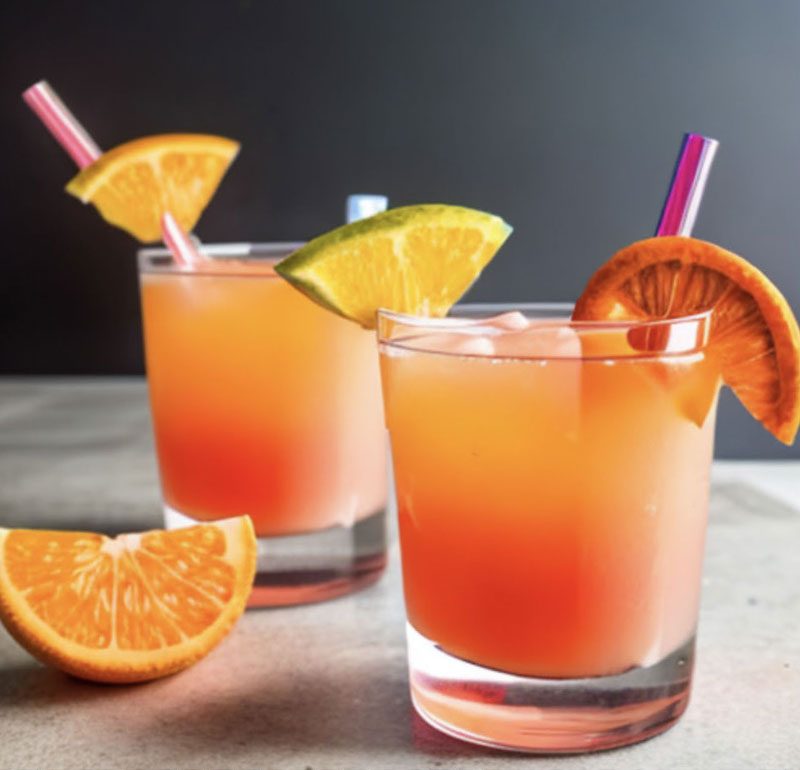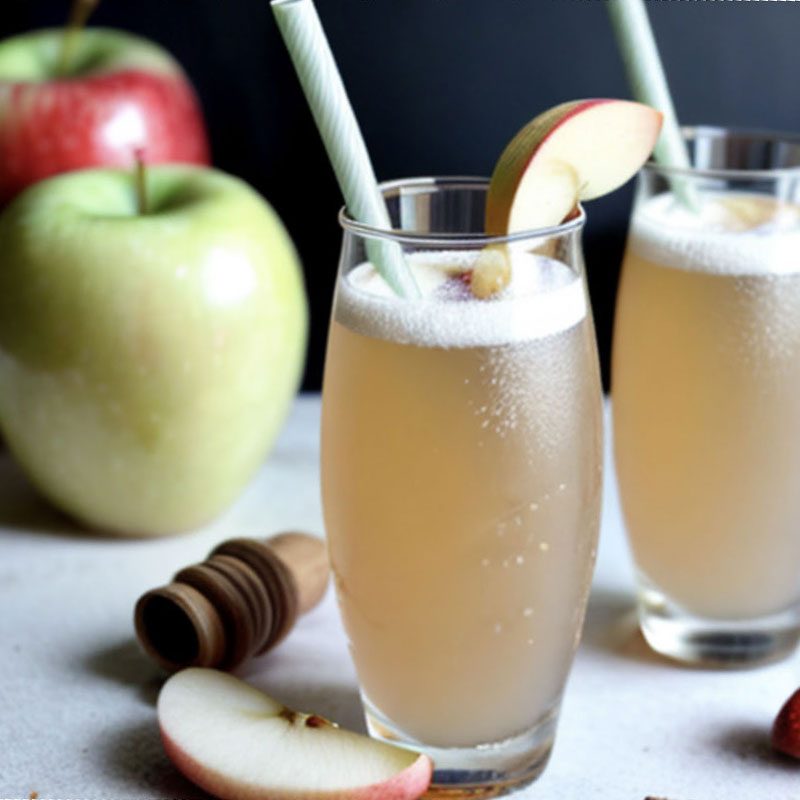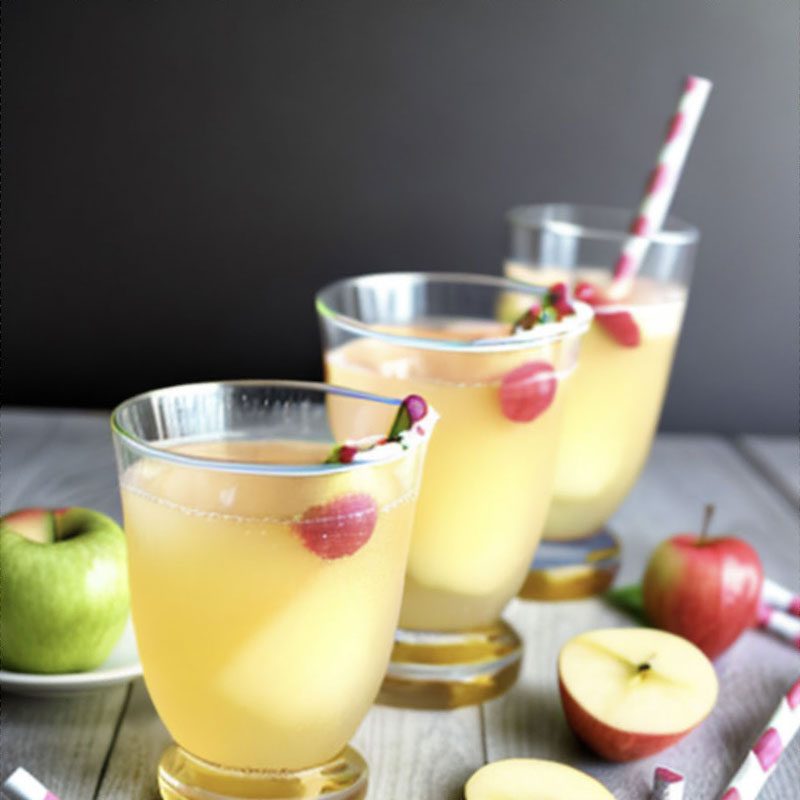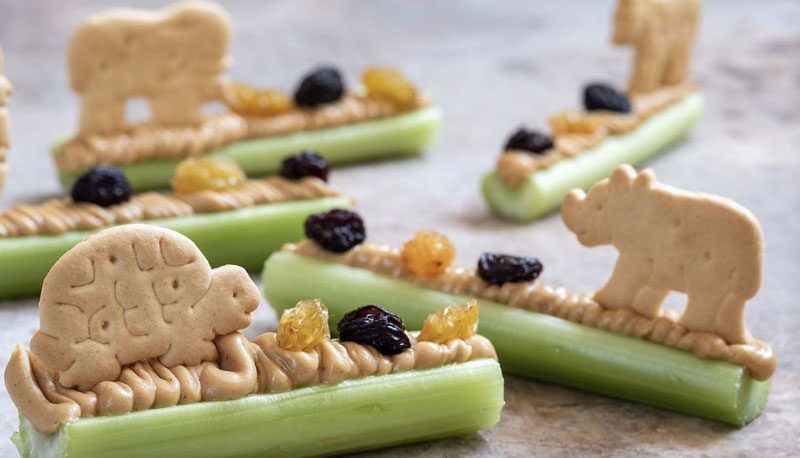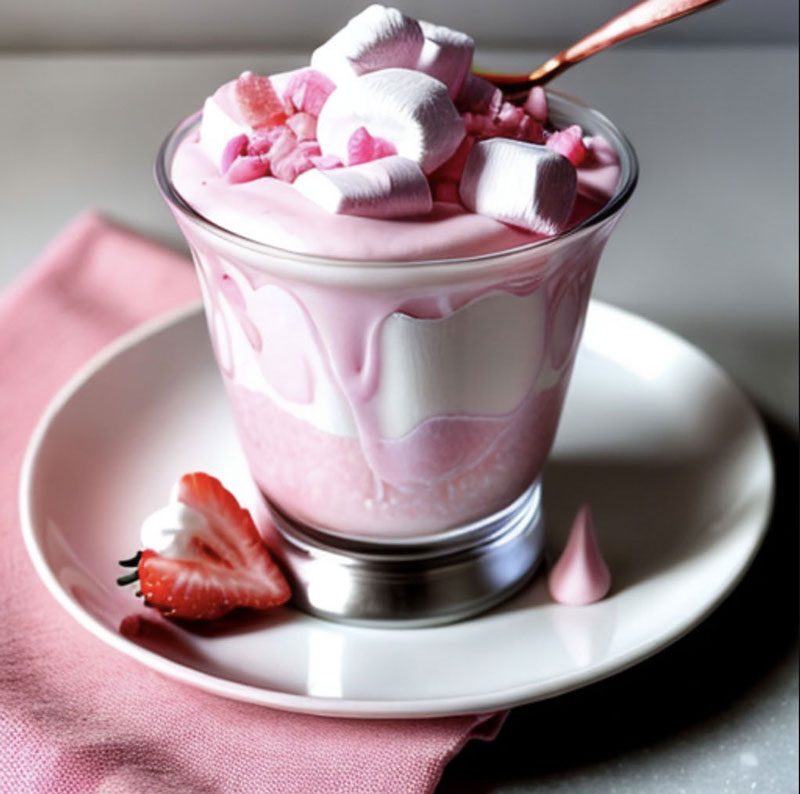Crafting a cover story
I recently learnt all about the fast-paced world of trucking journalism on a trip to Auckland.
On a trip to Thames at the end of last year I was lucky enough to head out with the New Zealand Trucking magazine’s Gavin Myers and Dave McCoid who were working on a cover story.
The cover story is an article that focuses on the truck on the cover of the magazine each month. Gavin and Dave will head out with a driver and an exceptional truck, travelling one of its usual routes, where they find out facts about the truck, how it performs, its usual jobs, information about the company it is attached to, as well as the driver’s background in the industry.
These noteworthy stories consist of an article and pictures from throughout the journey. They contain many technical details that are particularly interesting to truck enthusiasts. When I was offered the opportunity to accompany these truck journalists ‘on the job’ and learn from the best, I couldn’t say no!
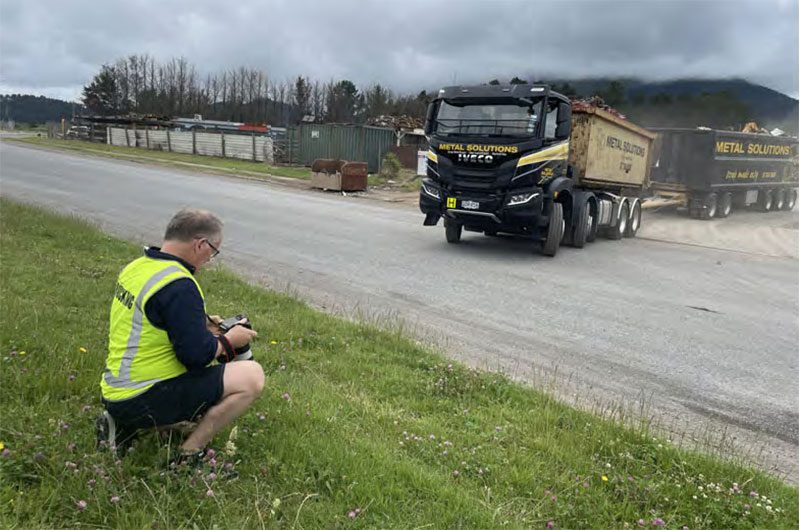
I quickly found out there is plenty of planning behind a cover story before it can happen: contacting the company and asking for permission to head away with the driver, then arranging dates and times for the actual journey and for an interview with the company’s owner.
The cover story job I was invited to join was on an Iveco T-Way from Metal Solutions in Kawerau.
Gavin, Dave, and I arrived at the Whakatane Transfer Station where we met up with driver Shannon de Vos, who had a load of scrap steel and aluminium that was destined for the Metal Solutions yard in Kawerau.
After introducing ourselves to Shannon he set off, while we jumped in the car and raced ahead, in order to pull over on the side of the road and get pictures and videos of the truck in its natural habitat.
This is an important practise on road tests to get content that illustrates the truck in action. After we arrived at the scrap metal yard, while Shannon unloaded, Gavin, Dave and I met with the owner of Metal Solutions, Dave Fretwell. Meeting with the company owners is another central part of crafting the cover story’s content as it gives Gavin and Dave background on the company, its history and current achievements. We found out that Metal Solutions deals in scrap metal within the central North Island region, buying all types of scrap metal and selling it on for export and recycling.
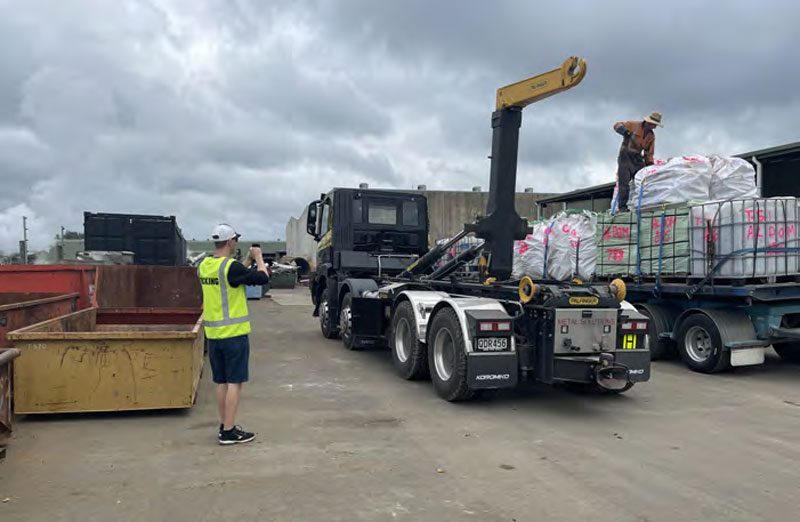
When we finished the meeting, we headed back to the Iveco to record the specifications of the truck. This involves using a series of cameras and videoing equipment to gather content that shows the truck up close; this will not only be put in the magazine article but also will be compiled in a video that accompanies the magazine article and is posted online.
It often takes two to three days to gather all the information, photographs and footage needed, so we were up the next morning ready to follow the Iveco to Auckland where it was delivering a load of aluminium chip sheets to Metal Man. Gavin went in the cab with Shannon to gather a driver profile on him that is also used in the article.
Dave and I took over the photography and raced ahead to get some action shots on the top of the Kaimais. We then worked on getting some tracking shots on the highway that turned out to be epic once we reviewed them.
As we arrived in Auckland, we discovered that unfortunately Gavin was not able to go into the Metal Man yard due to safety rules, so we said our goodbyes to Shannon and headed back to Thames.
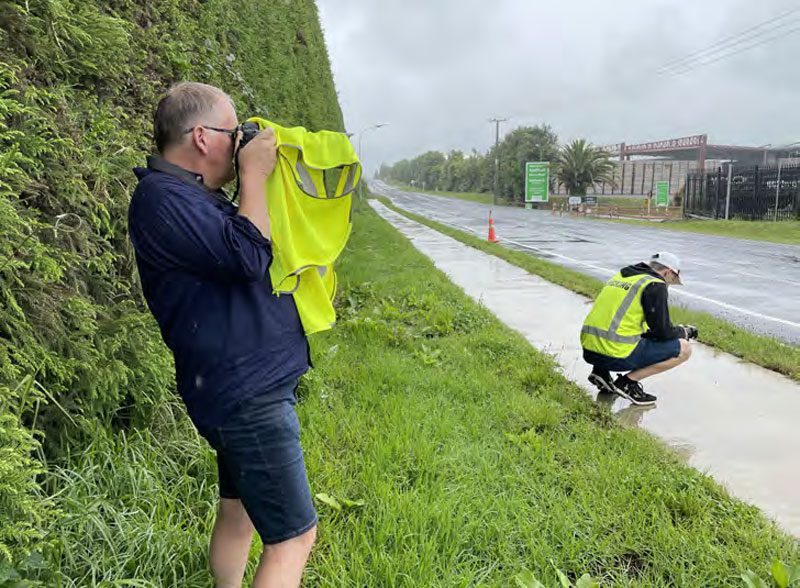
Over the next month, Gavin crafted the story into an article that would spread over several pages for the magazine, which would describe the journey we went on and include the relevant and interesting information researched about the truck, and the company associated with it. As well as this, he chose and organised the pictures that would be used in the article, while the various video clips were sent away to an expert to be edited into a video that also shows the truck in action. It was an awesome and insightful trip to go on and I was able to get some insider information on what it is like to be a full-time truck journalist.
Riding shotgun with Aaron
Rochelle spends a day in the life of a log truck driver
It’s 2am when my alarm goes off. At 4am I meet Aaron De Silva at the Riversdale Beach turnoff, just south of Masterton, an hour’s drive from my house. When I arrive Aaron is doing a check on his truck ensuring everything is in order. He lives in Palmerston North and started work at 1.30am!
Aaron drives a Kenworth K200 for HP Transport, owned by Joe Potter from Trentham. He has been working here for nearly three years but has a driving career of 30!
Once the check is complete, we head off to Blairlogie Forest. We are doing local runs delivering logs to either rail or Kiwi Lumber. This has been Aaron’s daily run for the past two months. It keeps him away from home Monday to Friday, returning home to his family on the weekends.
When I ask Aaron what he loves most about his job, he tells me it’s the scenery. Doing this kind of work takes him to some remote places around the country and he gets to see some beautiful sunrises and views. Unfortunately, it was overcast, and I was not lucky enough to see the sun come up.
When we arrive at the forest to be loaded, we have to pull over up the hill a bit and wait because there are a few trucks ahead of us and it’s a very narrow drive down. We aren’t waiting too long before Aaron gets a call saying another driver is stuck, struggling to get up the hill loaded on the loose gravel. Aaron, being very good at his job, shows off his driving skills by doing a three-point turn on this narrow road and reversing down the winding track in the dark. He makes it look easy but I’m not going to lie, it got my heart racing a little! Once down they hook the other truck up to Aaron’s and he tows him up the hill.
The first thing the loader driver does is lift the trailer off the truck. Log trucks carry their trailers on top of the truck when empty. By 5.30am we are loaded with 6.1m logs that will be used for export timber and head off to Kiwi Lumber in Masterton. Aaron has a forestry app called WSX where he enters where he’s been, where he’s going and what he’s got on. The information is emailed to dispatch. Aaron’s truck has a 48-tonne permit and scales on the trailer that weigh his load to ensure he carries the correct amount of wood. He puts 25 tonne on the truck and 22 tonne on the trailer. The logs can be loaded no higher than the bolsters that support them. The loader driver, James, is an expert and gets the loads bang on! Slow and steady is the drive out of the forest, because the gravel is so loose on the rough road and we don’t want to end up stuck like the truck before us. Aaron also explains to me how easy it is for the trailer to kick out, slide and flip.
Before we unload, we stop at Waingawa weighbridge to record the gross weight (loaded), and then once unloaded we go back to record the tare weight (empty). Here we also pull into the gantry, where a huge hook and chain is used to lift the trailer onto the back of the truck.
At Kiwi Lumber, we must wait our turn to be unloaded. Aaron pulls over and uses this time to undo the chains, catch up with other drivers who are also waiting, and update his logbook. When the loader driver is ready, he calls us in and we park safely in the unloading zone. At this point we are not allowed to leave the vehicle, but they make an exception for me to get photos from a safe distance wearing the safety gear I have been given, a hard hat and hi-vis vest so I can be seen.
Each round trip, loading and unloading, takes about three hours and Aaron does three or four of these each day. I stay on for one more circuit, then Aaron drops me off at my ute and I head home and let him carry on with his day. Driving a log truck takes some skill! Gorgeous scenery and some big challenges are all in a day’s work. Thanks a heap for letting me tag along Aaron, I had a great time!
Travelling at West Coast
Dustin gets the opportunity to explore the West Coast in the passenger seat of a K200 with the amazing team at Trans West.
Hey little truckers! How are the holidays going? I hope you got some good presents at Christmas time and the new year is going well.
While I was on holiday on the West Coast (in New Zealand’s South Island), I thought it might be good to do a transport trip on the other side of the Southern Alps, so we called in and asked Trans West (who are based just out of Greymouth). Luckily enough, Dylan and Kate let me do an article. Mum got the call on Tuesday to say I was going in a Kenworth K200 – SWEET!!
On Wednesday morning I got up and made breakfast then I got ready to go. Dad and I jumped in the car and went to the yard and met the driver, Graham (Hutch) Hutchison. For our first load we left the yard and went to Ikamatua, a small town on the way to Reefton and dropped off some bulls at a farm. As we made our way to the second job I asked Hutch why he liked transporting stock and what got him into trucking. Like many people who drive trucks, he remembers riding around in trucks with his granddad and dad, and along with the stock he just enjoys seeing rural New Zealand through the windscreen and going to many different new places; no day is the same.
The rest of the afternoon we moved cattle between farms in the Grey Valley, making our way back to Stillwater where Dad met me on the side of the road.
Another question I asked Hutch was what was his favourite truck and favourite piece of road to drive. His reply was one we can’t disagree with – driving the Devil’s Staircase near Queenstown or the Lewis Pass in his old Kenworth K108, how cool.
Thank you very much to the Trans West team, you were awesome for getting me into this truck, I really enjoyed my day on the West Coast.
My very first truck ride
Ever wondered what it’s like to go for a ride in a truck? Well our friend Margaret Murphy wondered this too, and she tells us all about her very first truck ride.
I had been looking forward to this trip for months. A road trip with my work colleagues Dave and Gavin from NZ Trucking Media and Guy Knowles driving his Kenworth K220 truck and trailer unit from Papakura to Palmerston North. Talk about a dream come true!
We started off with a hearty breakfast at the BP Truck Stop at Papakura then hit the road, saying goodbye to the Auckland traffic, destination Palmerston North. Over the Bombay Hills we travelled along State Highway 1 before turning off just north of Hamilton, heading south down to Te Kuiti where it was time to refuel. Next stop National Park for refreshments and a wee stop. As we travelled through the King Country, I couldn’t help but think how scenic the countryside was, still nice and green after some recent rain.
At National Park, Dave asked if I would like to join Guy in his truck for the next stage of our journey. Of course, I would, but politely asked Guy if it was all right, at the same time quietly jumping for joy at the opportunity. I first had to be shown how to climb into the truck, and tentatively trying not to slip and lose my dignity, I climbed up. I was in, relieved I hadn’t embarrassed myself, belted up and was ready to go. Off we headed, next stop Mangaweka for a photo opportunity of Guy and his K220 truck in front of the long ago closed Mangaweka Garage for a feature article in New Zealand Trucking magazine. Getting out of the cab was my next challenge. I opened the door and looked down. Oh help, it’s a long way down. Wisely Guy did warn me not to try to jump out, maybe he saw the ‘how the heck’ look on my face. I did make it safely down. Photos taken, back into the truck again, next stop Hunterville. Guy and I chatted along the way while I quietly noted how smoothly he moved through the gears and how quiet and comfortable the ride was. The twists and turns of the road, corners, and bridges were effortlessly navigated as we made our way south. I suspect that had something to do with Guy’s skilful driving. It’s a big rig but you would never have thought so.
My ride ended at Hunterville. Gavin took over the passenger seat until we reached our final destination, Guy and Helen Knowles’ truck depot in Palmerston North.
What an awesome day. Yes, I was tired but I had a great day. I won’t ever forget this day. Thank you to Guy and Helen Knowles for their hospitality and for giving me the opportunity to have my very first truck ride.
I couldn’t wait to tell my friends and family all about my truck adventures when I got home.
Chris Angus Transport Ltd [CAT LTD]
Little Trucker Down Under’s Milly McCauley sat down with Jodi and Chris Angus, owners of CAT LTD in Mataoki, where she found out all about their log cartage operation.
Who owns CAT Limited?
Myself (Chris) and my wife Jods own the business
How long has CAT been in business?
Almost 16 years, since 2008.
Where do you have trucks based?
We have trucks based in Matatoki, Paeroa, Waihi,Mount Maunganui and Whangamata.
How many trucks does CAT operate?
We operate eight.
How many people does CAT employ?
We have a team of 13 including ourselves and are proud to say our first, second and third employees – Foxy, Mel and our operations manager Jumbo – are still with us today!
Our awesome team consists of the ones mentioned above as well as Kaleb, Andrew, Evan, Glenn, Jimmy, Albert, Phil and Christine, who are behind the success of our business.
What makes of trucks do you have and how many of each?
We have got five Scanias, two Kenworths and one Freightliner.
What type of loads do you cart?
Logs, logs and more logs.
Where are the main areas you operate in around New Zealand?
We service the centre of the North Island, mainly Maramarua and around Whangamata on the Coromandel Peninsula.
What is your title at CAT and what are your responsibilities?
I (Jodi) work in the office and Chris works on the tools, driving or directing, whatever needs to be done really!
Did you always think you would work in transport?
(Chris) My father always worked in log truck driving, so I was always destined to work in the industry, however, I didn’t actually start driving until I was 30 when I bought my very first truck, a Hino, and started the business in 2008. I then met Jods in 2009 and we progressed together.
I (Jodi) always seemed to end up amongst trucks, previously working at Provincial Freightlines in Thames, however my dad drove the Tip Top truck for many years when I was growing up and I would always go with him to help deliver the ice cream around the Coromandel Peninsula.

What’s your favourite thing about working in the industry?
Our favourite thing is the people we work with and that every day is different, and being a logging truck company the challenge of negotiating off-highway roads to get the logs shifted.
What would you like to see change for the transport industry over time?
We would both like to see the health and safety regulations surrounding children and logging be changed. Currently children under the age of 16 are not allowed to come for trips in logging trucks both to the forest and to the sawmill/port due to health and safety reasons.
When you have kids interested in trucks at a young age, not being able to take them out and show them what we really do, and what is involved in the industry, is difficult.
In order to continue to encourage and foster interest, trips out to do practical work are important.
Do you have a favourite truck in your fleet?
I (Jodi) used to before it was sold and that was the company’s very first Hino.
I (Chris) don’t have a favourite, but the European trucks are very comfortable and the American trucks with manual gearboxes are still cool to drive.
What would be some advice you would give to any young people who want to start a career in transport?
We would both say listen to the older people in the industry who have experience and knowledge, listen and take it all in.
Can you tell me a fun or interesting fact about CAT?
CAT LTD Stands for Chris Angus Transport Ltd and the logo came from Jumbo’s Black Freightliner that we purchased in 2014, which had artwork on the side of it – an Angus Bull pulling logs – which made a cool connection with our surname Angus. Hence why next to the CAT LTD title there is a cartoon bull.
Truck visit at Moama Anglican Grammar
Our friends at Moama Anglican Grammar in Victoria, Australia had the chance to get up close with a great big truck and ask questions about rural transport.
Livestock & Rural Transporters Association of Victoria (LRTAV) and the Livestock, Bulk and Rural Carriers Association (LBRCA) are big supporters of Little Trucker Down Under, with members and their families providing some great feedback about why they love this great magazine!
Both LRTAV and LBRCA have been very busy sharing their generous subscriptions around to primary schools and members.
Just before school broke up last December, the LRTAV went to Moama Anglican Grammar to showcase Little Trucker. Grade 3 was selected to come out and explore the truck and ask questions about rural transport. The morning was a great success, with lots of upcoming industry members in the making.
Shout out to Graham Thomson Motors Shepparton for supplying a Kenny for the kids to explore. Libby was the Grade 3 representative who thanked Gerard Michel, general manager of Graham Thomson Motors.
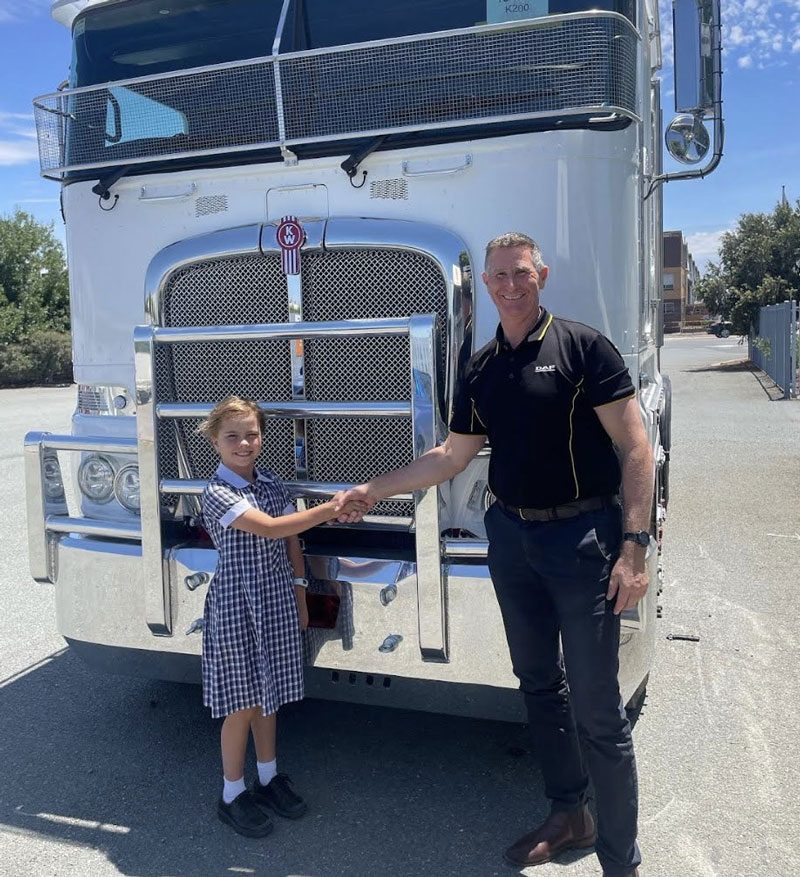
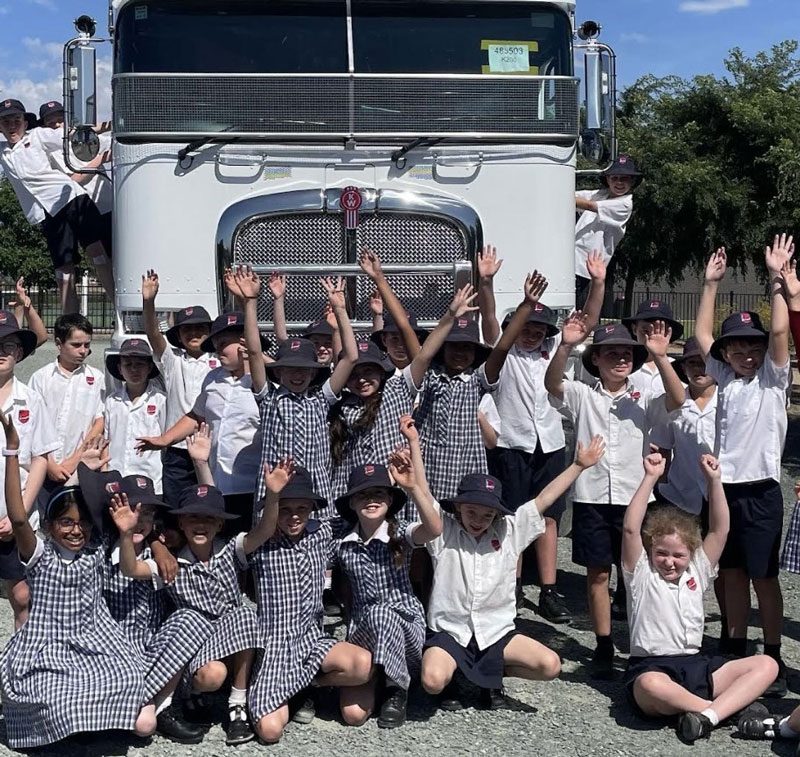
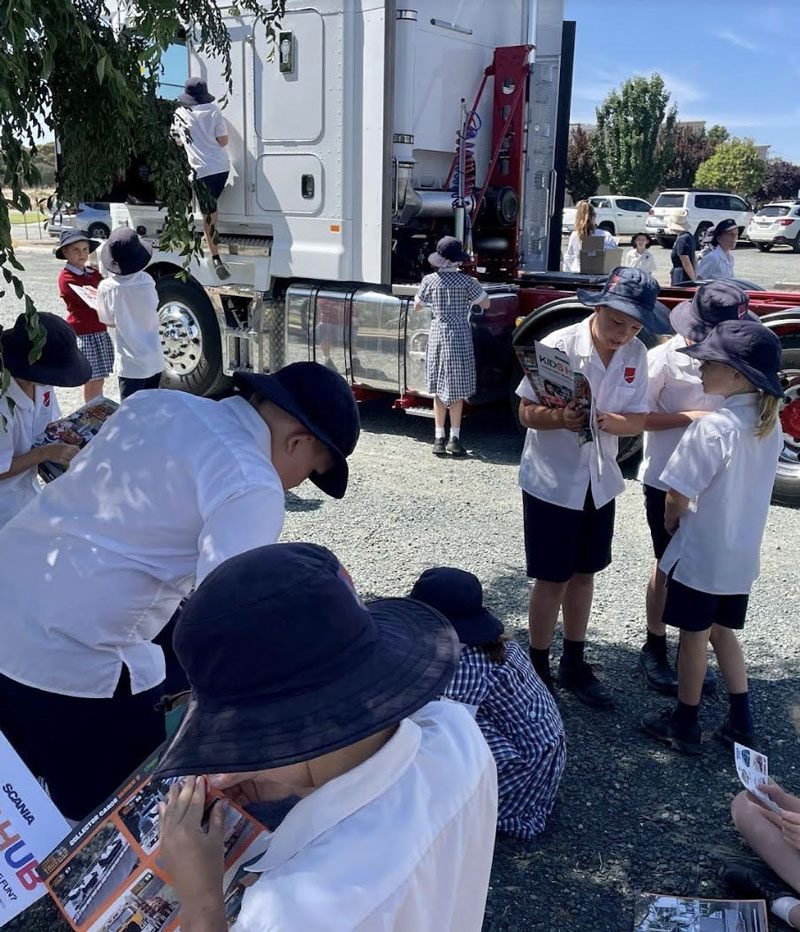
Autumn Sunrise
Not only does this easy sunrise recipe taste great, it also looks incredible!
Ingredients
- Orange juice
- Soda water, sparkling lemonade or ginger ale
- Grenadine syrup (Grenadine is a sweet syrup made from pomegranate juice)
- Orange slices for garnish
Method
- Fill each glass about a third of the way up with orange juice.
- Add lemonade to fill the glass, leaving a small gap for the grenadine.
- Very slowly and carefully pour a small amount of grenadine into each glass (ask an adult to help you). The grenadine should sink to the bottom to form a pretty red layer. Grenadine is very sweet, so you don’t need much at all.
- Add a slice of orange to the side of each glass and finish off with a straw.
- Serve immediately and enjoy.
Apple Sparkle
A fruity punch perfect for a picnic.
Ingredients
- 1 litre apple juice
- 75ml of cordial – try raspberry, apple and elderflower, or passionfruit
- 1 cup of chopped fruit, such as apple, pineapple and strawberries
- Sparkling water, soda or lemonade
Method
In a large jug, combine your apple juice and cordial with the chopped fruit, and top with your sparkling water, soda or lemonade. Add plenty of ice to keep it cool. Serve immediately.
Ants on a Log
Ants on a Log are a fun, healthy snack the whole family can enjoy. The traditional way to make Ants on a Log is to fill celery stalks with peanut butter and add raisins. However, there are heaps of different versions you can make, depending on what you have at home and what you like!
Ingredients
- 3 celery sticks
- ¼ cup peanut butter
- About 30 raisins
Method
- Wash the celery sticks and cut each stick in half lengthwise.
- Add peanut butter into the hollow part of each celery stick and spread.
- Push raisins into the peanut butter to represent the ants.
- Alternatives – try cream cheese or yoghurt instead of peanut butter. If you don’t like celery, you can use a sliced banana. And if you don’t have raisins available, try chocolate chips, nuts or other dried fruit.
Ambrosia
This pink delight is a family favourite and takes just 10 minutes to make – but remember to leave a few hours for it to set so the marshmallows are perfectly soft.
Ingredients
- 1 kg strawberry yoghurt
- 500 ml cream
- 1 packet marshmallows
- 1 punnet strawberries
Method
- Slice strawberries and cut marshmallows in half.
- Whip cream until you get soft peaks, then add the yoghurt and mix until it’s well combined.
- Add marshmallows and fruit, and then spoon into either a large glass bowl or individual serving bowls or glasses.
- Leave in fridge to set for a minimum of four to five hours (best overnight). Serve and enjoy.

